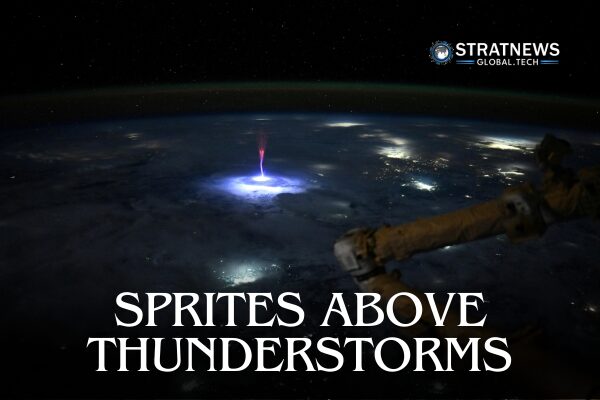A Flash in the Darkness
During a recent orbital pass over Earth, satellite sensors captured a rare glimpse of sprites – massive, fleeting red flashes that bloom above thunderstorms. Unlike typical lightning, sprites are born in the mesosphere (approximately 50–90 km altitude) and triggered by intense electrical activity in the thunderstorms below.
They often take the form of jellyfish-like or carrot-shaped glows and last merely a few milliseconds, making them difficult to study from the ground. So why should we care about these brief atmospheric fireworks when we already track thousands of lightning strikes daily?
What Are Sprites, Really?
Sprites are a type of Transient Luminous Event (TLE), different from lightning yet connected to its electrical dynamics. When a powerful cloud-to-ground lightning strike discharges positive energy, it can trigger an electrical breakdown in the upper atmosphere, producing these ghostly red glows.
But here’s something to question: Do sprites influence weather, or are they mere byproducts? Some researchers believe they may play a subtle role in the global electric circuit, impacting atmospheric chemistry and potentially influencing ozone concentrations at high altitudes.
Why Seeing Sprites from Orbit Matters
Observing sprites from orbit allows scientists to:
Track their frequency and distribution across different regions.
Study their connection to severe weather systems, tropical cyclones, and monsoon thunderstorms.
Improve our understanding of upper-atmospheric electrodynamics, which can affect satellite operations, radio communications, and even aviation safety.
However, you might argue that resources spent on studying these rare events could be better used elsewhere in weather forecasting. But is this truly the case, considering sprites may reveal patterns of extreme weather generation and electrical discharge behavior that ground-based instruments miss?
A Reminder of Earth’s Electric Personality
Sprites remind us that Earth is not just a collection of weather systems but a dynamic electric planet. Each sprite that appears above a storm is a marker of energy exchange between the lower and upper atmosphere, hinting at processes still underexplored.


